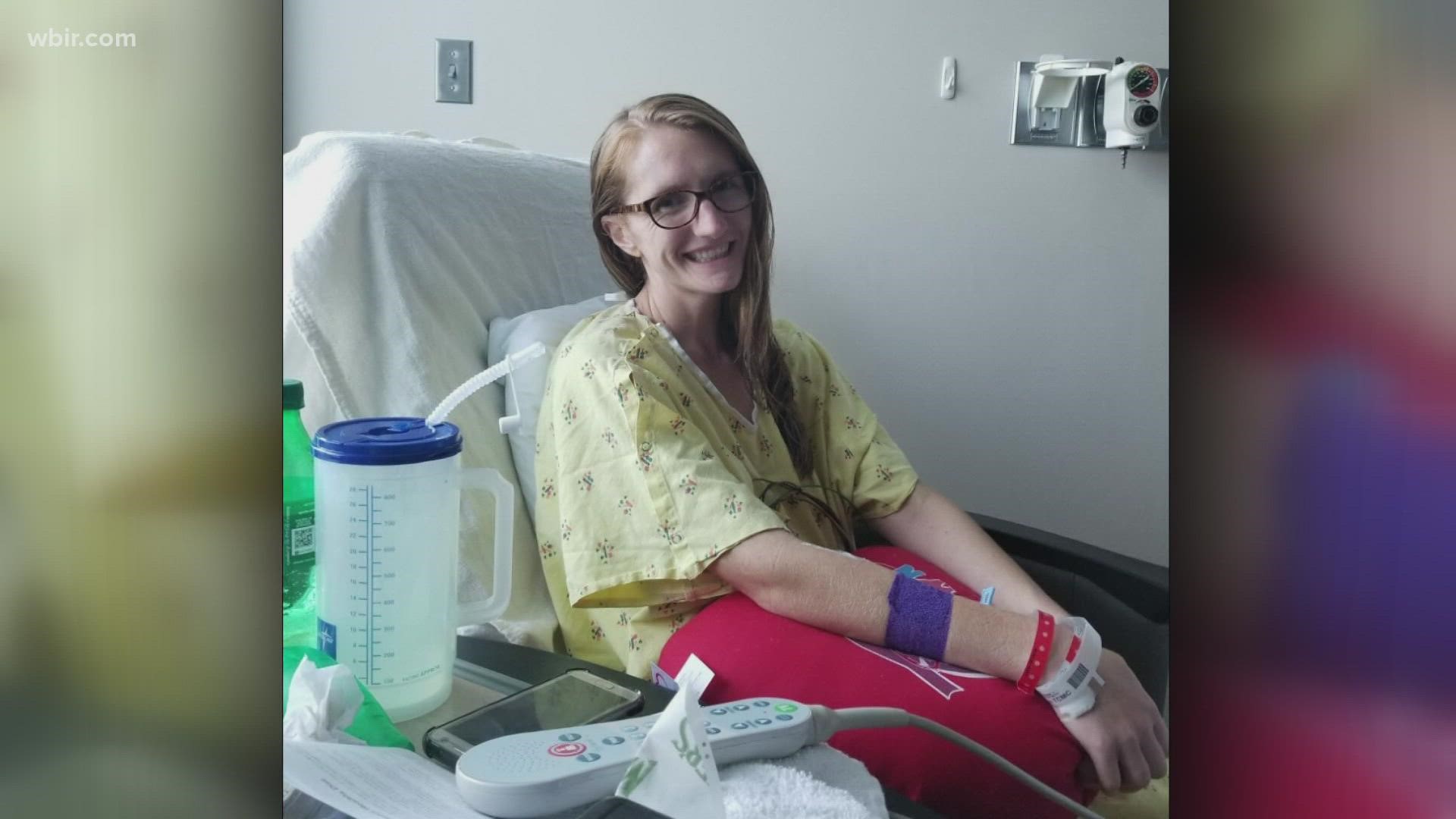KNOXVILLE, Tenn. — Before 2016, having a "healthy heart" wasn't something Meghan Cole of Maryville, a young and active mother of triplets, had given much thought to.
"I just didn't think that something like this could happen to me," she explained.
Cole was out on a run one morning when she started feeling like something wasn't right.
"At this point, my chest is really tight, and the pain had traveled to my shoulder and it was in my shoulder blade," she recalled. "And I said, 'This looks like it could be a heart attack. But I'm 32, and this is crazy, right?'"
A trip to the emergency room confirmed to her that it was not crazy. Cole did suffer a heart attack.
She also found out that she had spent her entire life with an undiagnosed congenital heart defect. In other words, she had a hole in her heart.
Six years later, Cole has bounced back and regained her health.
She wants to share her story in hopes of encouraging other women to pay attention to the warning signs of heart disease.
"The reason I want to spread so much awareness about this is because I do think that people don't think this can happen to them," she said.
According to the CDC, heart disease is the leading cause of death for women in the United States.
"One in three women die from heart disease. It kills more women than all forms of cancer combined, and a lot of folks just don't realize that," American Heart Association Executive Director Beverly Miller said.
That's why the organization is asking people to wear the color red on National Wear Red Day.
"[It's] truly for awareness," Miller explained. "I love seeing my personal friends dressing their babies in red. We can change the way a generation thinks; that they're aware that this is their number one killer that maybe we can prevent some of this from happening."
"My whole family always wears red on Wear Red Day," Cole smiled.
She hopes that by wearing red and keeping the conversation going, she can prevent what happened to her from happening to someone else.
"I am part of this community that I never wanted to be part of. I never knew I wanted to be a heart warrior until I became one," she said. "And now it's something that means so much to me."
Some heart attacks can happen suddenly, but according to the American Heart Association, most start slowly, with mild pain or discomfort.
Call 911 if you experience any of the following:
- Chest discomfort. Most heart attacks involve discomfort in the center of the chest that lasts more than a few minutes – or it may go away and then return. It can feel like uncomfortable pressure, squeezing, fullness or pain.
- Discomfort in other areas of the upper body. Symptoms can include pain or discomfort in one or both arms, the back, neck, jaw, or stomach.
- Shortness of breath. This can occur with or without chest discomfort.
- Other signs. Other possible signs include breaking out in a cold sweat, nausea, or lightheadedness.
Symptoms vary between men and women.
Women are more likely to experience jaw or back pain, shortness of breath, and nausea or vomiting.
February is American Heart Month. The American Heart Association encourages people to wear red all month long and share it on social media using #KnoxGoRed and tag the organization @AHATennessee.

